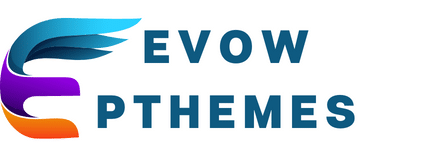In this digital age, traditional books have found a competitor in the realm of interactive digital storybooks. As technology infiltrates every aspect of life, many educators and parents have started to question the role of digital media, particularly interactive storybooks, in children’s language development. Can these digital tools be a valid substitute for printed books in nurturing children’s literacy? Or are they merely a distraction? This article will delve into these questions and examine the connection between interactive digital storybooks and children’s language development.
The Influence of Digital Media on Children’s Language Development
Digital media has undoubtedly become a significant part of children’s lives. From television to tablets, children are constantly interacting with screens. In particular, interactive digital storybooks have gained popularity as a versatile tool both for entertainment and education.
A voir aussi : Are Aquatic Exercises More Beneficial Than Traditional Gym Workouts for Pre-natal Fitness?
Interactive digital storybooks differ from traditional books in that they offer features like animated illustrations, read-aloud options, and interactive games that are designed to engage children and stimulate learning. This feature-rich format seems to offer considerable potential for language development in children.
According to a study based on data from Crossref, children who frequently use interactive digital storybooks demonstrate improved vocabulary and comprehension skills compared to children who read only traditional print books. The interactive elements in digital storybooks, such as word highlighting and audio narration, can indeed support children’s language learning by providing immediate feedback and reinforcement.
En parallèle : Can Intermittent Fasting Regimens Enhance Chemotherapy Efficacy in Cancer Patients?
However, it’s important to remember that children’s language development depends on more than just exposure to words. The interaction between a child and a book is a complex process. When a child reads with a parent or teacher, they can ask questions, make predictions, and discuss the story, which are all important aspects of language development.
The Role of Joint Media Engagement in Enhancing Digital Literacy Learning
One way to bridge the gap between interactive digital storybooks and the essential elements of traditional reading is through joint media engagement. This term refers to interactions that take place between an adult and a child while using media together.
Joint media engagement creates opportunities for adults to guide children’s interactions with digital media, model good media habits, and discuss the content. This interaction can be particularly beneficial when using interactive digital storybooks. If a child is reading a digital storybook with an adult, they can talk about the story, ask questions, and relate the story to their own experiences, just as they would with a traditional print book.
A well-designed digital book also offers the potential for more immersive and interactive experiences than traditional books. For instance, Google’s Read Along app utilizes Google’s speech recognition technology to provide real-time feedback. When children read out loud, the app can correct pronunciation errors and provide positive reinforcement when they read correctly, which creates an engaging and interactive reading experience.
The Challenges of Integrating Digital Storybooks into Children’s Studies
While digital storybooks offer substantial benefits, integrating them effectively into children’s studies is not without challenges. One key issue is the potential for distraction. Digital storybooks often feature engaging elements such as animations, sounds, and interactive games. While these can enhance learning, they can also divert attention away from the text, disrupting the child’s focus on reading.
Another challenge is the digital divide. Not all families have access to the necessary digital devices or a reliable internet connection. Until this disparity is addressed, digital storybooks cannot fully replace traditional books in children’s language development.
How Schools can Facilitate Digital Literacy Development
Schools have a pivotal role to play in facilitating children’s digital literacy development. They can integrate digital storybooks into the curriculum and provide access to digital tools for students who might not have them at home.
Teachers can guide students’ use of digital storybooks, ensuring that they focus on reading rather than on the interactive elements. They can also encourage joint media engagement, inviting parents to participate in their child’s digital reading activities.
Furthermore, schools can collaborate with tech companies to develop digital storybooks that align with the curriculum and cater to their students’ needs. Some companies have already started creating storybooks with education-based interventions, offering interactive learning modes that are consistent with school curricula.
The Future of Digital Storybooks and Children’s Language Development
The connection between digital storybooks and children’s language development will likely continue to evolve as technology advances. While digital storybooks cannot fully replace the rich, multi-sensory experience of reading a traditional paper book, they can play a valuable role in complementing traditional literacy instruction.
As digital storybooks become more sophisticated, they will likely offer even more opportunities for language learning. With careful selection, guided usage, and joint media engagement, digital storybooks can be a powerful tool in helping children develop their language skills.
While the digital revolution has brought about many changes, one thing remains constant: the power of storytelling, whether it’s presented in a traditional book or a digital format, is a potent tool in children’s language development.
Navigating the Digital Divide: Access to Digital Storybooks
The digital divide remains a significant challenge when it comes to access to digital storybooks. Digital divide refers to the unequal access to technology and reliable internet connectivity among different social groups. This inequality can potentially hinder young children from benefiting from digital media in their language development.
Access to appropriate digital devices is crucial for children to engage with interactive digital storybooks. Similarly, a stable internet connection is necessary to download and use these digital tools effectively. According to a study on Google Scholar, children from socio-economically disadvantaged backgrounds often lack access to these resources.
Addressing this issue requires collective efforts from various sectors. Schools can provide digital devices and internet access to students lacking these resources. Tech companies can also contribute by creating affordable, education-focused hardware and software. Governments can implement policies to ensure more equitable distribution of digital resources. Until these disparities are addressed, however, the potential of digital storybooks in nurturing children’s language development will remain under-utilized.
The Role of Adults in Guiding Children’s Interaction with Digital Storybooks
Adult guidance or joint media engagement plays a crucial role in maximizing the benefits of digital storybooks for children’s language development. Interactive digital storybooks offer many features that can enhance a child’s phonological awareness and reading comprehension. However, children may need assistance from adults to use these features effectively.
When an adult reads a digital storybook with a child, they can guide the child to focus on the text instead of getting distracted by animations or games. The adult can also emphasize the connection between written and spoken words, enhancing the child’s literacy skills.
A PubMed Crossref study suggests that joint media engagement also promotes dialogue between the adult and the child. This dialogue can provide opportunities for the child to ask questions, discuss the story, and relate the story to their own experiences. These interactions, which are intrinsic to book reading, are critical for language development.
Conclusion: Harnessing the Potential of Digital Storybooks
The advent of digital media, particularly interactive digital storybooks, has undoubtedly introduced a new dynamic in children’s language development. These digital tools, characterized by their engaging and interactive features, show promising potential in nurturing children’s emergent literacy.
Through the use of digital storybooks, children can improve their vocabulary, comprehension skills, and phonological awareness. Joint media engagement, which involves the guidance of adults in children’s interaction with digital media, can further enhance these benefits.
However, the effective integration of digital storybooks into children’s language development is not without challenges. Addressing the digital divide and ensuring that children focus on reading rather than on distracting features are key issues that need to be tackled.
With careful guidance and appropriate selection, digital storybooks can complement traditional book reading in children’s language literacy development. As technology continues to advance, the role of digital storybooks in children’s language development is likely to become more significant. Despite these advancements, the potency of storytelling, whether through traditional books or digital formats, will continue to be a cornerstone in children’s language development.












